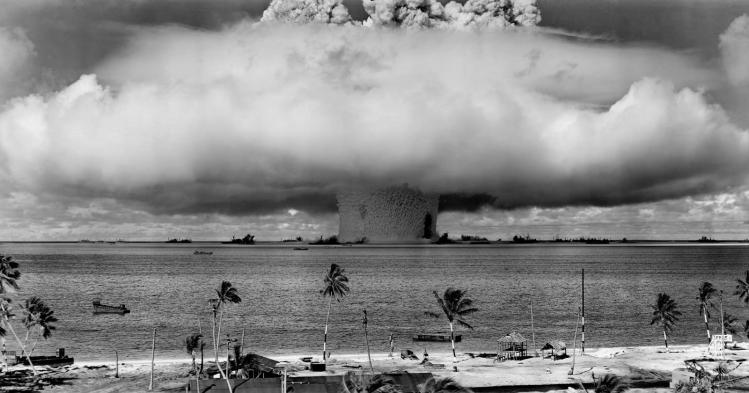
Among the many issues that don’t get the attention they deserve on newspaper front pages and in presidential debates, one in particular stands out as both especially urgent and inexplicably neglected: the growing threat of nuclear war. In June, the International Campaign to Abolish Nuclear Weapons (ICAN) reported that global spending on nuclear weapons surpassed $90 billion in 2023, a 13 percent jump from the previous year and a new all-time high.
The United States is driving this spike, spending $51.5 billion in 2023, or approximately $98,000 per minute, on its nuclear arsenal and infrastructure. This total is more than eight times the combined spending of eight other nuclear-armed countries, including China and Russia. Over the past five years, since ICAN began its research, the United States has increased its spending by 45 percent.
Under the pretext of “modernizing” its nuclear triad, the United States is running a new arms race, stockpiling more nuclear weapons than at any time since the Cold War ended. In 2015, Barack Obama initiated a ten-year, trillion-dollar program to upgrade the country’s nuclear arsenal and delivery capabilities. Though the Trump administration abandoned most other Obama-era initiatives, it continued this particular program and, in August 2019, withdrew from the Intermediate-Range Nuclear Forces Treaty—an agreement with Russia limiting short- and intermediate-range missiles and missile launchers.
More recently, Pranay Vaddi, senior director for arms control at the National Security Council, proclaimed a “new era” for nuclear arms in which the United States would deploy nuclear weapons “without numerical constraints.” Speaking at the Arms Control Association, Vaddi said “the prospects for strategic arms control are dim,” noting that New START, the last remaining treaty between the United States and Russia limiting strategic nuclear weapons, will most likely expire in 2026 without replacement.
Meanwhile, China has increased its nuclear arsenal from 400 to 500 warheads and is on pace to have 1,500 warheads by 2035. In May, Russia deployed tactical nuclear weapons to Belarus in response to promises from NATO countries to furnish Ukraine with new weapons, including long-range missiles. Belarusian president Aleksandr Lukashenko, a key ally of Vladimir Putin, warned of a nuclear apocalypse if Russia continues to be pressured by the West. “One careless word, one movement could cause armed conflict up to the use of nuclear weapons,” Lukashenko said in a public address.
Following Russian military exercises in Belarus, Putin traveled to North Korea, where he met with Kim Jong Un and revived a mutual-defense pledge between the two countries. This pledge will likely help North Korea realize its own long-held nuclear ambitions and increase Russia’s use of North Korean military equipment in Ukraine.
“There is one path—and one path only—that will vanquish this senseless and suicidal shadow,” United Nations Secretary-General António Guterres said earlier this year. “We need disarmament now.” But Guterres also acknowledged that the world’s nuclear states have shown no interest in even slowing down this accelerating arms race, let alone stopping it. “States possessing nuclear weapons are absent from the table of dialogue,” he ruefully noted. Until the United States re-engages these other countries in arms-control and nonproliferation negotiations, the threat of nuclear annihilation will continue to grow. In January, the Bulletin of the Atomic Scientists reset its famous Doomsday Clock to ninety seconds to midnight, the closest the clock has ever been to nuclear armageddon. It is time for this issue to take its rightful place at the center of our election-year debates about foreign policy.
